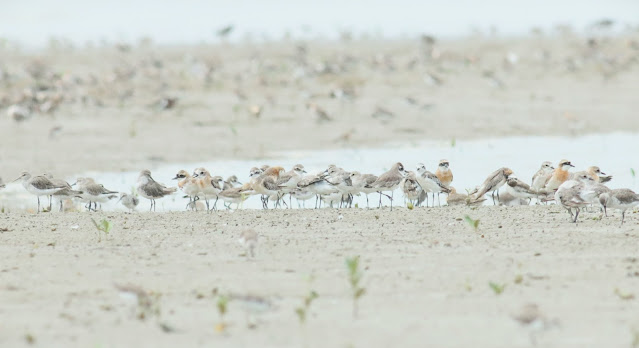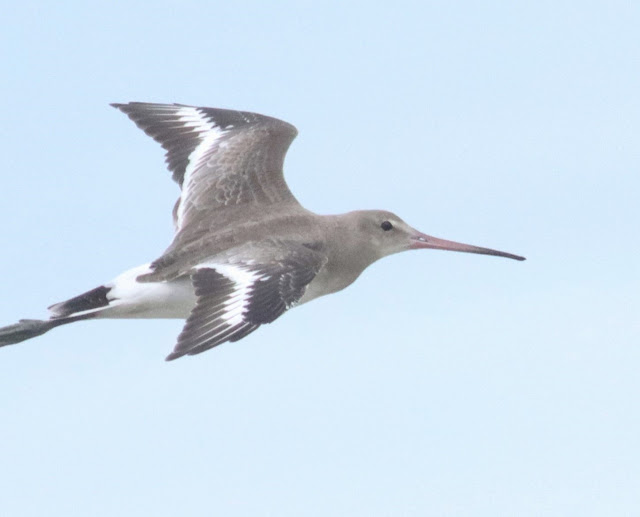Over here, the migratory waders would made their return trip (Autumn migration) as early as in July (based on pers comm with seasoned birders). From then to September you can see some of them in their colourful breeding plumage. In this trip to TAT which is located in mainland Penang, I managed to see some of them but mostly in flight cause the tide movements have pushed them further away from the river mouth.
Here is a Lesser Sand Plover
(Note: now it is called a Tibetan Sand Plover)
Some Charadrius basking in the morning sun which was partially blocked by some clouds which makes the weather quite cooling.
Here's a larger group of waders.
Ruddy Turnstone
One of my favourite waders and it is still having its breeding plumage.
Looks like it is just slightly larger than a Tibetan Sand Plover.
A Tibetan Sand Plover showing some breeding plumage.
Wonder whether this TSP is from the 'Mongolus' group - can see some white patch at its forehead?
Some of them are quick to transform themselves into partial winter plumage like this one.
This time I witnessed quite a number of juveniles arriving at the same time as the adults / 2 CY birds.
This is another juvenile I believe.
Common Sandpiper
(Also a juvenile it seems)
Common Redshank
One of the most common waders in this region. You can see them every single year through out the winter season.
The one and only Common Greenshank seen this time.
Also a lone Pacific Golden Plover seen this time.
Initially I thought I saw a new bird but it turns out to be just a Broad-billed Sandpiper.
Red-necked Stint
I hardly able to photograph them in their winter plumage.
Red-necked Stint
They are fast but not furious.
It's not easy to capture them in flight cause these small little ones can actually fly very fast.
This time I saw quite a number of Black-tailed Godwits and some Asian Dowitchers.
Black-tailed Godwit
Some of them can fly quite close to you.
Black-tailed Godwit
Still showing off its breeding plumage.
Great Knot
Great Knots
Not many were seen this time.
Bar-tailed Godwits
Common Redshank
A nice flight sequence of some Common Redshanks.
Maybe we can consider calling them a "Spotted Redshank" instead.
Some them have really dark uppersides.
Like some B&W paintings.
Some are quite plain looking like this one.
A Ruddy Turnstone in flight
Some Ruddy Turnstones with a Red Knot
Whimbrel
Not many seen this time - just four of them.
Eurasian Curlew
Gentle waders in the sky
Tibetan Sand Plover
Probably the most abundant wader you can find here.
Most likely a 2CY bird
So as this one I believe.
According to Dave Bakewell, this one has three generations of feathers !
This Tibetan SP looks like the usual wintering wader.
I think this might be a Greater SP?
A Broad-billed SP with a feather instead of a fish.
Curlew SPs
Broad-billed SP has many variations of bill.
Some Broad-billed SP with some Tibetan SP
A comparison of a Curlew SP. These are two different birds here.

























































































